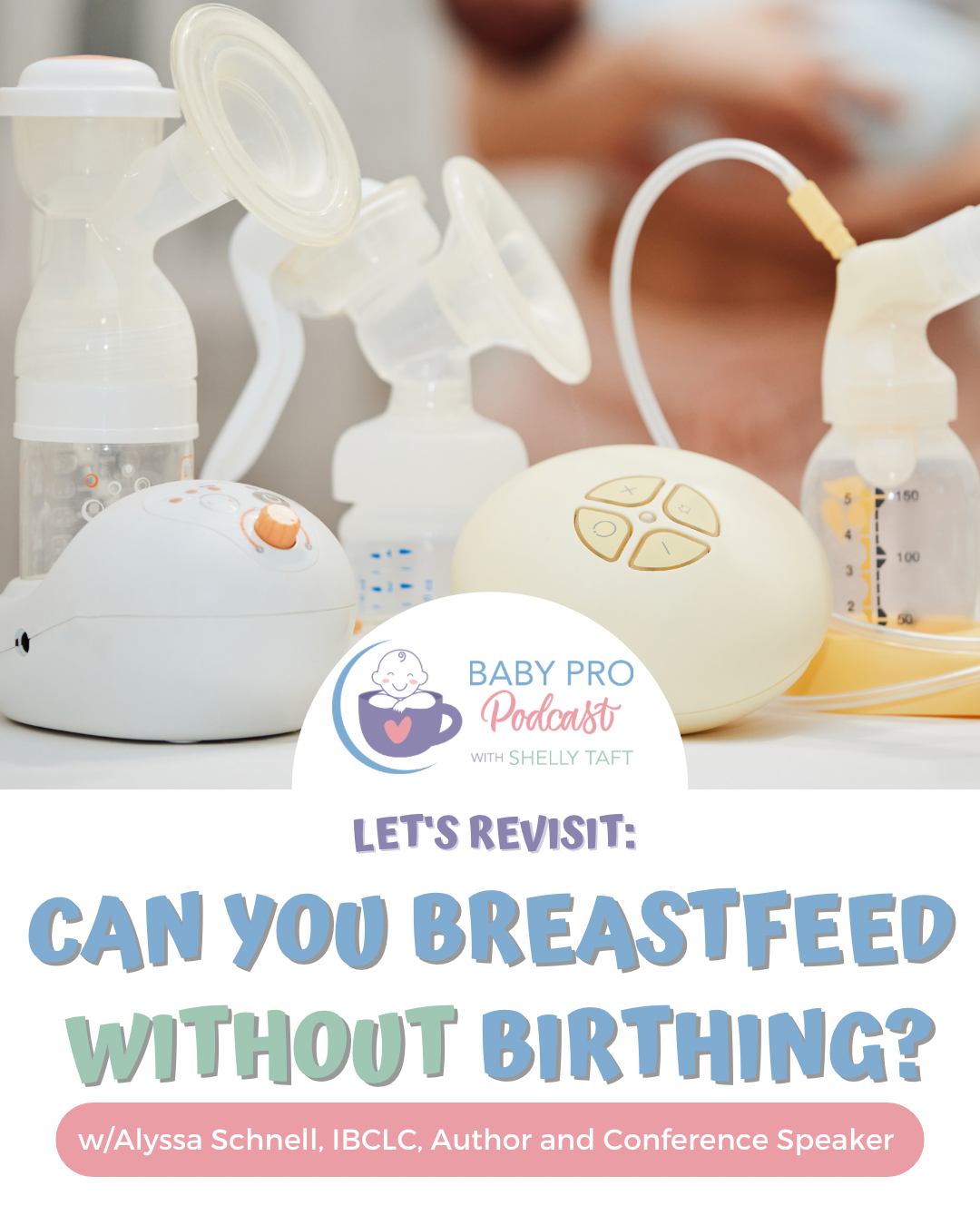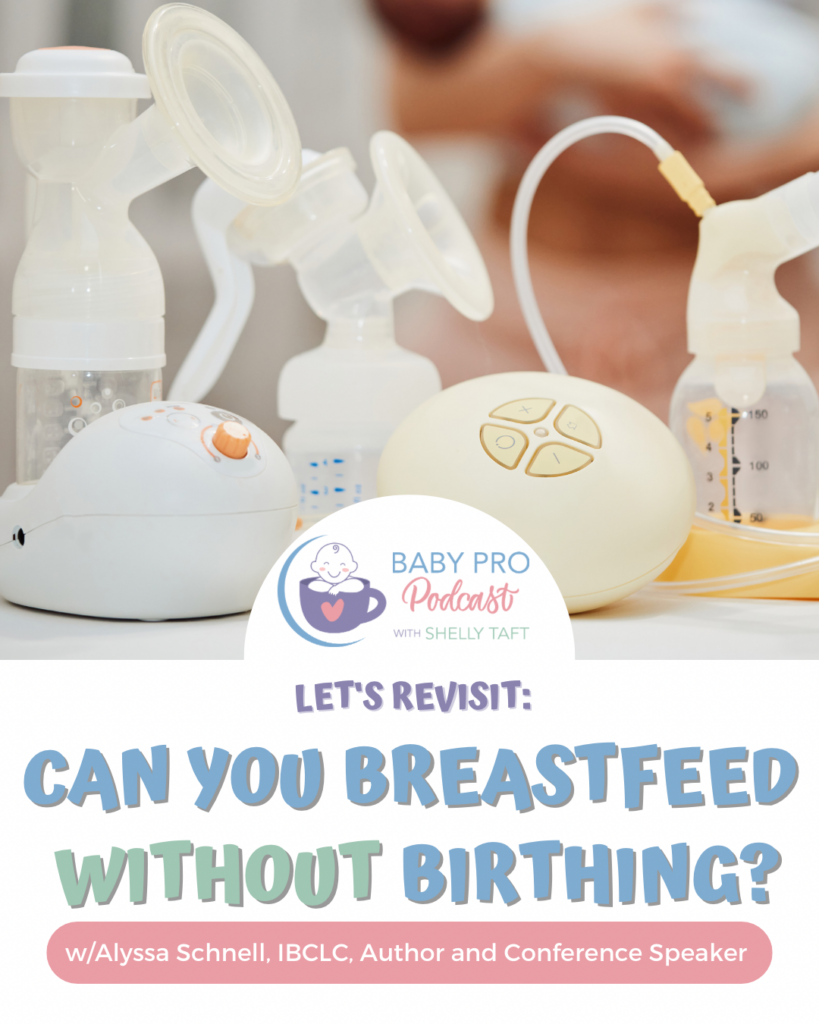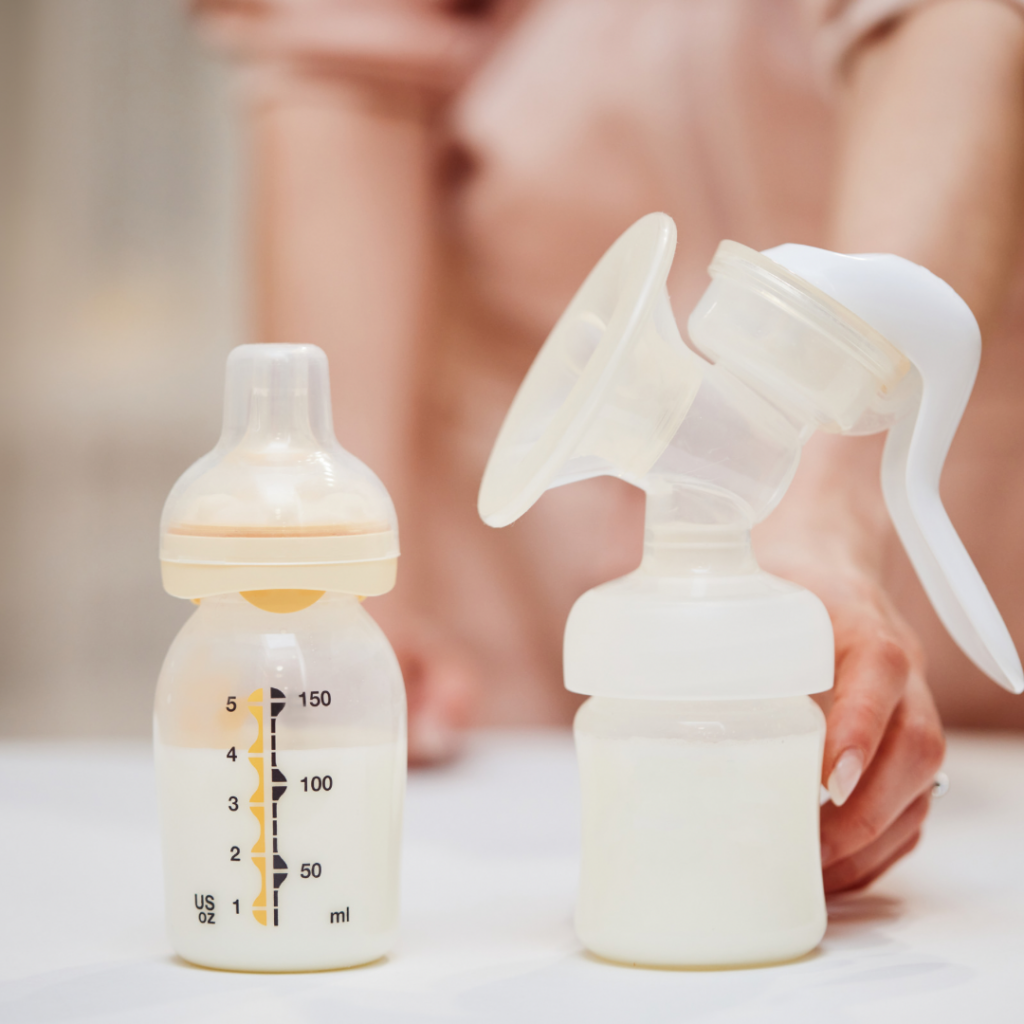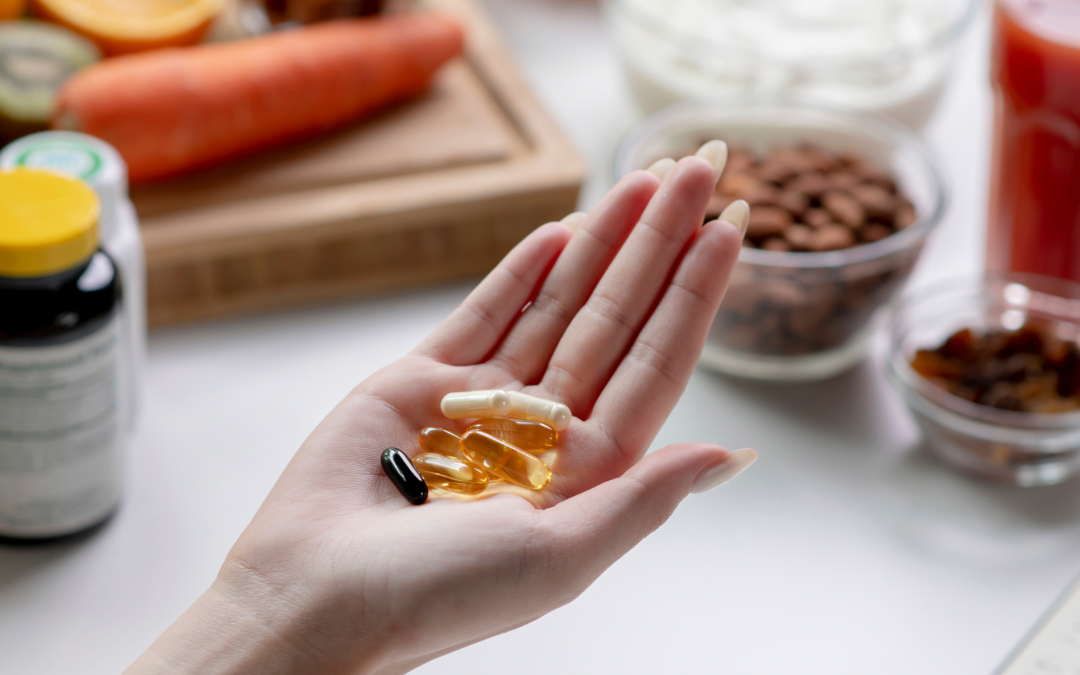Can You Breastfeed Without Birthing?


In this revisitation of a previous podcast episode, I speak with Alyssa Schnell, an International Board Certified Lactation Consultant (IBCLC), author of “Breastfeeding Without Birthing” and conference speaker about factors of milk production, recommendations for families who want to start to induce lactation, and steps to induce lactation. Here we dive deep into the question, “Can you breastfeed without birthing?”
What makes Alyssa Schnell an authority on this topic?
Alyssa Schnell has been an IBCLC for ten years and before that, she was a La Letche League Leader. The amazing thing, being a part of the La Letche League is what got her into the field of lactation. After struggling with nursing her first child, Alyssa joined La Letche League and was able to receive the support she needed with feeding her little one, she wanted to give back. Not only this, but when she was expecting her third child by adoption, she really wanted to understand lactation and induced lactation. That is where her journey into induced lactation really began; through successfully inducing lactation and breastfeeding her daughter by adoption. Taking it a step further, Alyssa became an IBCLC into order to gather the qualifications she felt like she needed to be able to help other families trying to do the same thing. When looking at the literature, Alyssa saw that it was outdated and vague – so she wrote the book she wish she had; “Breastfeeding Without Birthing”. Let’s dive right in, shall we?

What exactly is induced lactation?
Induced lactation is bringing in milk without a recent pregnancy. There’s many reasons why somebody might wish to induce lactation, but the most common reasons are:
- growing your family by adoption
- growing your family by surrogacy
- the partner is the birthing parent, usually a same sex female couple, and the non birthing parent wishes to also breastfeed or breastfeed together
All these cases are induced lactation. So the idea is that when there’s been a pregnancy, the hormones of the pregnancy cause the body to start making milk while inducing lactation is trying to make milk without that. Many people truly are unaware that you can create a milk supply in your body without actually being pregnant.
That is precisely why Alyssa is trying to get the word out…
Since most people don’t know about induced lactation, they really aren’t in contact with her unless they already know it’s an option. So talking more about it – as we are doing at this very moment – is doing a great service to people who may be in the situations described above and have the desire to breastfeed their child without birthing them. Alyssa has even described a reality where even doctors and OBGYNs in her own circle were unaware of this phenomenon – so how are they to recommend it to their own patients? That all being said – let’s talk more about exactly how one goes about inducing lactation.
You can induce lactation in 3 steps.

Step 1: Get Your Body & Breast Ready!
The first step is to get your body and breast ready for lactation. This is what happens in a pregnancy. The hormone shift. The breasts get fuller and heavier. They start to make some small amount of initial milk.
Step 2: Bring in Milk Before Baby Arrives
Start to bring in milk before the baby arrives. There’s no analogy with pregnancy. The reason we have a step two is that right after giving birth, as you know, the milk comes in very quickly over that first week and continues to grow quickly in that first month. When you induce lactation, that’s not the case. It’s very, very slow. And so if we can take a lead time before baby arrives in step two to bring in the milk, then there’s some milk there.
Step 3: Feed Baby & Grow Milk Supply
By the time baby gets there, and then step three is babies arrived, we’re feeding baby, growing milk production even more. It’s a very flexible framework because, first of all, we can skip steps if necessary, particularly step two. If there isn’t a lot of time, we skip it. Or we can combine steps one and two, or even combine steps one and three if needed.
Built in Flexibility
What is done in each step is very flexible. So it can often involve pharmaceuticals, but it doesn’t have to – it can involve herbs. Because medications may be involved, Alyssa also encourages looking at a full medical history including fertility history. When prescriptions are involved Alyssa works alongside their OB or PCP which is why she always asks for their doctor on their intake form and then fax them a copy of the report or plan that is made. The only thing that really is necessary to induce lactation is that physical stimulation of the breast, some combination of breastfeeding, chest feeding, pumping and or hand expression, those are the only things that are needed, one, two, or three of those. It is still a very complicated process. Not only is creating the plan complicated, but once you’re putting it into place, a lot of questions come up. That’s why Alyssa strongly encourages seeking help from an IBCLC if you are interested in induced lactation.
Different Plans For Inducing Lactation
Some families may want to avoid medications and stay all natural, but some families may be all in on medications so everyone’s plan will look different. The plan that is designed for each family depends on medical history, fertility history, and especially their timeline. When looking at all of these variables, then a proper plan can be designed for each individual family.

Which natural pathway tends to be more successful in inducing lactation?
While it depends on each families individual circumstances, Alyssa does note that trying a combination of different herbs can prove effective. Natural practices like acupuncture and acupressure are also backed by research and have been effective not just for inducing lactation, but in helping families struggling just with low milk supply.
Let’s Talk Timelines!
There really is no specific timeline that can be said as a general since every individual induced lactation plan will look so different. Even if baby has already arrived, Alyssa starts their timeline where they’re at. There may be plenty of time, especially a case where it’s a surrogacy or the partner is birthing and we have a known due date, or the baby may already have arrived and there is much less time available in creating the timeline. In the former two circumstances, Alyssa typically starts families on their timeline around the end of the first trimester as at that point the pregnancy is fairly secure and there is plenty of time to prepare the body and breast – a process that takes 9 months during pregnancy.
Basically, the earlier the better – if possible.
The Elephant in the Room: Don Paradona
Don Paradona was originally developed as a gastrointestinal drug, but it increases proaction and helps your body release its own natural prolactin. Prolactin is the primary hormone that is responsible for milk production – pretty cool right? So what’s the problem? In the United States, it’s not approved by the FDA so it makes doctors very hesitant to write a prescription. People can (and do) get it from international online pharmacies with and without a prescription. So it’s really tough, though, because obviously, if there is a pharmaceutical medication, we want the doctor to be supervising and the pharmacist.
What about other prescription medications?
In the realm of prescription medications, domperidone is FDA approved and similarly effective to don paradona. There is also reglan, which research shows also increases prolactin levels. The problem is, says Alyssa, “…it’s something that has some pretty serious side effects, particularly when taken for a longer period of time. And anyone inducing lactation is going to benefit from taking it for a long period of time. So what my experience has been is often the client will say to the doctor, I’m interested in taking down peridone. And the doctor will say, well, we can’t do that, but no problem. I’ll just write you a prescription for Reglin instead. And so I try to give them a heads up on that. Like, I really rather you not take anything than take regglin, because the side effects of that when taking along this is not worth any amount of milk production, in my view.”
The other medications that are used are generally medications that increase estrogen and progesterone. So it could be a birth control pill, a progesterone, only a depot povera injection. “That’s usually where the oBgyns or the PCPs or midwives are pretty on board. They’re like, oh, this is not a big deal, I’ll prescribe that. And I very rarely have had trouble with that. Occasionally metformin, just as you would when appropriate. Not everybody’s going to. That’s not going to be appropriate for everyone, but that may be used occasionally. I can’t think of any other pharmaceuticals that are typically used.” says Alyssa.

But how successful is induced lactation?
Success criteria is determined by each individual family while taking into consideration their circumstances. That being said, Alyssa does say that she has had very few clients that didn’t make any milk. Alyssa describes that milk production is a spectrum where some clients have only made a few drops, while other have made all the milk their baby will need. The truth is, most people will produce milk somewhere in the middle. That’s the expectation she recommends her clients set from the start of their induced lactation journey.
Previous Pregnancy and Induced Lactation Success
If the body has previously gone through a pregnancy and the breasts have made milk in the past, usually the body is just much more responsive to induced lactation. Alyssa states, “There’s more glandular tissue. So that’s a huge factor in how much milk they’ll make. There are several other factors that go into it. Sometimes the health history, the fertility history can be an impairment for milk production. So if there are infertility due to hormonal issues, those same hormonal imbalances could make it hard to make milk oftentimes associated. What I’ve noticed is a lot more insufficient glandular tissue, which for your listeners means that the glandular tissue in the breast didn’t fully develop during puberty. And that seems to go hand in hand with infertility. So there’s Just so many factors that go into it. But once I get that intake form, and I always have the intake form before we meet the first time, I can see, I can say from what I see on your intake form, this is where kind of the range where I expect that you could be.”
Alyssa also notes that a lot of times, the families have the motivation to breastfeed as a result of wanting to bond and create a sense of attachment between the nursing parent and the baby. Breastfeeding is so much more than just making milk and it’s important to recognize that when diving into the realm of induced lactation.
Milk Removal Recommendations
Alyssa recommends parents doing some kind of milk removal at least eight times a day including once in the night in order to achieve maximum milk production. If the baby has yet to arrive, that’s going to be pumping and hand expression. If baby has arrived, that is going to hopefully be breastfeeding – but this isn’t always the case.
In terms of breast versus bottle after baby has arrived, Alyssa often has families supplementing with a nursing supplementer (a feeding tube at the breast more than the bottle). Nursing supplementers is going to result in better long term breastfeeding outcomes because it helps to keep baby at the breast or chest for longer amounts of time. When it comes to nursing supplementers, Alyssa states, “It also is going to support milk production by keeping at the baby at the breast or chest longer, sucking more vigorously. So I’m a huge fan of using a nursing supplementer and it’s tricky to use. It can be frustrating at first. And so that’s part of the plan is that before a baby arrives, I help them choose which one would be appropriate and then I have them buy it, fill it with water, take it apart, put it together, have their partner get comfortable with filling it and cleaning it and all that stuff. So that when they have a hungry baby and they don’t have enough milk, they don’t have this device that they’re fumbling with and it’s not so frustrated. They’re comfortable with it.”
The Results*
Results can vary, but usually Alyssa finds that her families are very happy. She states, “I have had clients who, particularly if they’re really finding getting lots of milk is really important to them, sometimes they feel disappointed, and I really encourage them because I had a client once who posted on social media, I’m making 40% of what my baby needs. I’ve reached my full milk supply. I thought, that’s right. She worked really, really hard and that was her personal full milk supply. And I love the way that she framed it that way, instead of saying, I’m only making 40%, she knew that she did the best and that she thought was exactly right for her. So it was so much about attitude that I’ve had clients who are making less milk who felt so excited and happy about the results, and then clients who’ve made more, who felt disappointed because. It wasn’t like 100%. That’s so hard. And I totally get those feelings too. But again, like you said, it’s about reframing breastfeeding as more than just the milk and also including the attachment, the bonding, things like that.”
Next Steps…
If you want to find Alyssa, you can find her at her website, breastfeedingwithoutbirthing.com or by following this link. She is also on instagram @alyssaschnellibclc. One of the things she offers for anyone interested in inducing lactation or relaxation is a free 15 minute consultation. The reason being, induced lactation is a big financial, time, and emotional investment so being able to ask some questions, build up some trust, and make sure you’re ready to take the plunge is definitely recommended.
If you want to listen to the full podcast, you can do so by clicking here. Make sure to visit our website, shellytaftibclc.com, where you can check out our online parenting community, the baby bistro. You can also follow us on social media at shellytaftibclc on Instagram. If you love the show, please leave a rating on iTunes that we can continue to bring you amazing episodes. Thanks for reading and see you on the next blog in two weeks.

